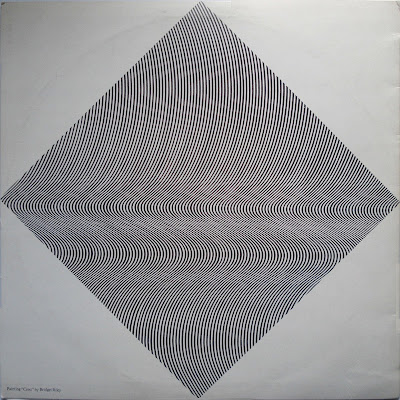Label:
ALM Records – AL-8 / AL-9
Format:
2 × Vinyl, LP, Album / Country: Japan / Released: 1976
Style:
Free Jazz, Free Improvisation
Subtitled
"Saxophone Solo Improvisations" / Gatefold sleeve
A-1,
B-2 recorded live at Aoyama Tower Hall, October 18, 1975.
B-1
and C-1 to D-2 recorded at Iruma Shimin Kaikan, October 16, 1975.
Design
[Designed By] – Nobukage Torii
Photography
By [Photo] – Masahiro Imai
Includes
liner notes in Japanese by Aquirax Aida
Producer
– Aquirax Aida, Hangesha, Yukio Kojima
Recorded
By – Yukio Kojima
AL-8
A
- Alto Improvisation No.1
............................................................... 26:00
B1
- Alto Improvisation No.2 ..............................................................
11:20
B2
- Alto Improvisation No.3 ..............................................................
12:30
AL-9
A1
- Sopranino Improvisation No.1 ...................................................... 6:17
A2
- Alto Improvisation No.4 Part 1 ................................................... 20:14
B1
- Alto Improvisation No.4 Part 2 ................................................... 18:50
B2
- Sopranino Improvisation No.2 ...................................................... 7:00
KAORU
ABE – alto saxophone, sopranino saxophone
After
the Partitas double album (recorded 1973, released 1981), Mort À Credit was to
become the last Abe album to be released in his lifetime.
Mort
À Credit was the title given to Céline's novel Death On The Installment Plan, not a coincidence and an analogy that makes at least a
little bit of sense - Abe was reportedly a major Céline fan, and his solo disks
on PSF have Japanese translations of Céline text attached to the songtitles in
the CD inserts. It consists of two alto improvs from a show on October 18,
1975, and five more (three on alto, two on sopranino) from another performance
a couple of days earlier. Released by Kojima on 2LP in 1976 (the reissue does
not appear to contain any unreleased material), it can be said to mark a
significant change in Abe's style. Abe is here a little soften from his usual
urgency - this can perhaps be in part attributed to the passage of time - and
become more interested in spacing and the exact rhythms of phrasing. While
never entirely ignorant of these concerns, by now they had come very much to
the fore, as is illustrated by the two recordings from the earlier show here,
in which roughly cut-off notes are spaced so regularly that their rhythms are
like watching a slowed-down strobelight. With run after run of harsh, crude and
almost bawdy staccato honking, Abe speedily races through the octaves in
ascending and descending anti-order cadence. He breaks regularly into very
shrill squeaks and squeals (and the occasional bold wail-melody) and references
non-existent simplistic and just about jokey tunes. The eventuall effect is
like having someone tapdance on stilletoes on your temple. Some passages are
about 50% clearer than others, and at more than one point the fidelity swings
sharply, moving from distant, muffled high-pitch screeching tones to furoious
forehead-centre blowing gusts in virtual machine-gun arc.
Of
the three alto tracks from the October 16 performance, the first is the most
impressive. Again beginning with twisting, dancing note clusters that
somersault forth from the speakers, Abe soon moves into the increasingly
familiar technique of aching, wrenching bursts of heavy shrieking alto,
separated by stopwatched periods of silence. Dwelling almost exclusively in the
upper register, Abe sets upon the sounds lying within a limited tonal range and
squeezes hard, eking an incredibly broad range of textures from an ostensibly small
palette. He continues to work thus in the following two pieces, nodding
throughout to the temperately expressionistic style he would employ so
effectively on the Nord duo with Yoshizawa, and further impressing the change
that had by now come about in his playing. Though at this point still slightly
unfocused in parts, these recordings offer a significant development of his
earlier playing that's simultaneously evolved and honed down/devolved, and are
crucial from a historical perspective, showing Abe to be almost out on his own
at this point (and also helping to contextualise the efforts of present-day
practitioners like Masayoshi Urabe and Tamio Shiraishi). The two sopranino cuts
hint at more history to be dug up, like Abe's pieces on bass clarinet showing
him to adapt to the instrument rather than forcing the instrument to adapt to
him. The first in particular (though at the time of the show possibly intended
as introductory in nature) sends lovely, moving and sustained melodies
flowering forth, one after another; the second ups the pace, with Abe
improvising in light, feathery strokes - a painfully abbreviated look at
another potential big gun in Abe's arsenal, the only other available glimpse
being the Graves record, and who knows how often Abe actually employed the
instrument in the live setting.
Mort
À Credit shows Abe in a fascinating period of transition, moving forth to
something complexly and identifiably new, yet intransigently rooted in what had
come before. Alan Cummings reports that the general consensus in circles there
within which Abe's work is known and appreciated is that he was at his best ca.
1970-1973/74, a view I don't think I could ever really significantly disagree
with. But for me the period summarised by Mort À Credit is also highly salient.
While his earlier recordings focused on energy and an almost self-conscious
encompassing of the saxophone's entire range and sonic potential (like some
deliberately comprehensive inventory of Sounds You Can Make With An Alto), the
material here shows Abe audaciously experimenting with a smaller range of
sounds - those inherent in the instrument's upper limits - and pushing them
further, narrowing his scope and coming up with improvisations which, in what
they attempt to achieve, are arguably even further 'out'.
(–
Review by Nick)
If
you find it, buy this album!




















































